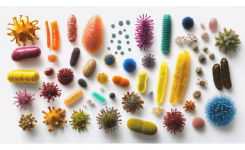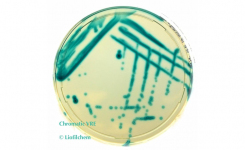
Laboratory testing at the U.S. Centers for Disease Control and Prevention (CDC) has identified the bacteria Burkholderia pseudomallei in an aromatherapy spray — the same type of bacteria that sickened four people in the United States earlier this year.
The spray, “Better Homes & Gardens Lavender & Chamomile Essential Oil Infused Aromatherapy Room Spray with Gemstones,” was found Oct. 6 in the home of a Georgia resident who became ill with melioidosis in late July.
CDC is continuing testing to see if the genetic fingerprint of the bacteria in the bottle matches those of the bacteria identified in the four patients – one each in Georgia, Kansas, Texas, and Minnesota. Two of the four patients died.
The contaminated spray was sold at about 55 Walmart stores and on Walmart’s website between February and October 21, 2021, when Walmart pulled remaining bottles of this spray and related products from store shelves and its website. The Consumer Product Safety Commission and Walmart are issuing a recall for the lavender and chamomile room spray and five other scents in the same product line. Investigation continues into whether other related scents and brands may pose a risk.
CDC has been testing blood samples from the patients, as well as soil, water, and consumer products from in and around the four patients’ homes since the agency began receiving samples in May. A sample of the Better Homes & Gardens spray tested positive this week. The genetic fingerprint of the bacteria that sickened the four patients is similar to that of strains usually found in South Asia; the aromatherapy spray was made in India. CDC is coordinating with state health departments in Kansas, Minnesota, and Texas to try to determine whether the other three patients may have also used this or similar products.
“Our hearts go out to the families that have been impacted by this situation,” said Inger Damon, MD, MPH, director of CDC’s Division of High-Consequence Pathogens and Pathology, which manages melioidosis. “We at CDC have been very concerned to see these serious related illnesses spread across time and geography. That is why our scientists have continued to work tirelessly to try to find the potential source for the melioidosis infections in these patients. We hope this work can help protect other people who may have used this spray.”
Melioidosis is a rare but serious disease in the United States, with about 12 cases reported annually. Worldwide, most cases are in people who live in or have traveled to areas where the bacteria naturally occurs, such as parts of South and Southeast Asia and northern Australia. It is also occasionally found in the Americas (e.g., Brazil, Mexico, Puerto Rico). Melioidosis causes a wide range of symptoms that can be confused with other common illnesses, like flu or a cold. Person-to-person spread is extremely rare.




















